ラボラトリー・グロウン・ダイヤモンドとは?
Title:Swarovski Created Diamondsコレクションを彩るラボグロウン・ダイヤモンドは、ダイヤモンドが生成される自然のプロセスを再現した革新的な製法で作られているため、化学的、物理的、光学的特性のすべてにおいて採掘されたダイヤモンドと全く変わりません。まばゆい輝きと見事なカットを施したダイヤモンドは、ファイン・ジュエリーとしてセッティングされ、永遠の輝きを放つ魅力的なデザインを作り出しています。
What Makes the Perfect Laboratory Grown Diamond?
Title:
The 4Cs of diamond grading are universally recognized and are a guiding light in the world of diamonds, helping to determine the quality and value of each laboratory grown diamond.
Clarity
Title:A Flawless Finish
Subtitle:I.F.
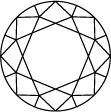
Internally flawless
VVS 1
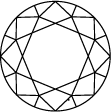
VVS 2
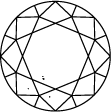
Very very slightly included
VS 1
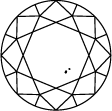
VS 2
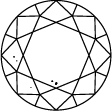
Very slightly included
SI 1
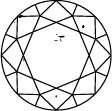
SI 2

Slightly included
I 1

I 2
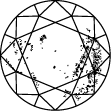
I 3
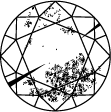
Included

Cut
Title:Perfectly Precise
Subtitle:Color
Title:Colorless and Compelling
Subtitle:Colorless
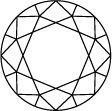
D-F
Near colorless
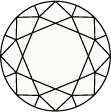
G-J
Slightly tinted
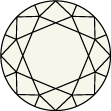
K-M
Very light color

N-R
Light color
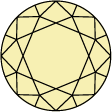
S-Z
Carat
Title:Worth its Weight
Subtitle:
2.5 mm
0.05 CT

3.0 mm
0.10 CT

3.8 mm
0.20 CT

4.5 mm
0.30 CT

4.8 mm
0.40 CT

5.2 mm
0.50 CT

5.8 mm
0.70 CT

6.3 mm
0.90 CT

6.5 mm
1.00 CT

6.9 mm
1.25 CT

7.4 mm
1.50 CT

7.8 mm
1.75 CT

8.2 mm
2.00 CT

8.8 mm
2.50 CT

9.4 mm
3.00 CT
Why Choose Laboratory Grown Diamonds?
Title:
Swarovski Created Diamonds are a unique collaboration between science and magic. Honoring nature’s brilliance with irresistible luminosity, laboratory grown diamonds are 100% identical to mined diamonds in every way but how they originate, and are forging a new future for the diamond jewelry industry. They also represent better value.
Moissanites vs Laboratory Grown Diamonds
Title:
Laboratory grown diamonds are indistinguishable from mined diamonds. They exhibit the same properties of sparkle, fire, and scintillation. Moissanites, however, are engineered to give the illusion of diamonds but compositionally and visually they are quite different. Their durability, brilliance, and color are quite distinct. Moissanites are not graded against the 4Cs like laboratory grown diamonds, they are only graded for their color.
Discover More about Laboratory Grown Diamonds
All About Swarovski Created Diamonds
Title:Innovative production and design
Subtitle:
The Swarovski Created Diamonds collection is a testament to our savoir-faire. These innovative jewelry styles exhibit a dazzling array of diamond cuts and intricate facets, expertly crafted to capture and transform light, creating a sense of wonder for all who experience them.
Laboratory Grown Diamonds Buying Guide
Title:Find the perfect piece
Subtitle:
Discover the world of Swarovski Created Diamonds jewerly, redefining the future of diamonds with exceptional collections that unite tradition and current trends. From the otherworldly brilliance of our interstellar collection to the pure elegance of our signature pieces, find a style that will last a lifetime.
The 4Cs Guide of Diamonds
Title:Quality control
Subtitle:
An enduring measure of quality, the 4Cs are used throughout the world of diamonds to help you determine the quality and value of each stone. The laboratory grown diamonds in the Galaxy and Eternity collections are graded against these 4Cs by IGI, the International Gemological Institute.
Frequently asked questions
FAQ
What are laboratory grown diamonds?
Laboratory grown diamonds are 100% identical to mined diamonds. They are just grown from a ‘seed’ in a laboratory, building layer upon layer using HPHT (high pressure high temperature) or CVD (chemical vapor deposition) to replicate the natural process over several days or weeks, rather than in the earth over millions of years. Aside from their origin, they are exactly the same.
Are laboratory grown diamonds less expensive than mined diamonds?
Laboratory grown diamonds offer the freedom to explore more breadth of jewelry in terms of sizes, shapes and settings than ever before, more easily. Swarovski is proud to offer modern, inspired designs with premium quality diamonds, meaning you get larger and higher quality stones tailored to every price point.
How are laboratory grown diamonds made?
Laboratory grown diamonds are made using an innovative process that flawlessly replicates nature, resulting in a laboratory grown diamond that is indistinguishable from a mined diamond in all chemical, physical, and optical attributes. There are two ways to replicate the diamond formation process: HPHT (high pressure high temperature) and CVD (chemical vapor deposition).
The technology is as brilliant as the laboratory grown diamonds themselves. In both cases, a tiny diamond seed is nurtured with carbon atoms under laboratory conditions of intense heat and pressure, forming layer by layer. Each laboratory grown diamond forms in its own way, with one-of-a-kind inclusions and unique growth patterns.
The technology is as brilliant as the laboratory grown diamonds themselves. In both cases, a tiny diamond seed is nurtured with carbon atoms under laboratory conditions of intense heat and pressure, forming layer by layer. Each laboratory grown diamond forms in its own way, with one-of-a-kind inclusions and unique growth patterns.
Are laboratory grown diamonds real diamonds? What is the difference between laboratory and mined?
Yes, laboratory created diamonds are 100% diamonds. They are identical to mined diamonds possessing the same chemical composition, hardness, brilliance and fire. Both are 100% carbon. One is born in a laboratory, the other one in nature - just as a greenhouse-grown orchid is identical to one found in nature. The only difference is their origin.
Are laboratory grown diamonds and mined diamonds the same?
Laboratory grown diamonds are 100% the same as a mined diamond in all optical, chemical and physical aspects. Only the diamond’s origin – coming from the earth or coming from a laboratory – is different. This difference can only be identified with sophisticated laboratory equipment. Laboratory grown diamonds processed in Swarovski Created Diamonds jewelry can be identified by a laser engraving on all laboratory grown diamonds 0.25 ct and larger.
Can a Jeweler tell that a diamond is laboratory created?
No, a jeweler cannot tell the difference between a laboratory grown diamond and a mined diamond with the naked eye or using traditional jeweler’s equipment. Sophisticated instruments are required from a Gemological Institute like IGI to find out if a diamond is laboratory grown, or grown in the earth.
Could laboratory grown diamonds test as moissanite?
No, they are identical to mined diamonds possessing the same chemical composition, hardness, brilliance and fire. Both are 100% carbon.
Moissanite, while also created in a laboratory, is a silicon carbide engineered to give the illusion of similarity to diamonds, but is compositionally and visually quite different.
Moissanite, while also created in a laboratory, is a silicon carbide engineered to give the illusion of similarity to diamonds, but is compositionally and visually quite different.
What is a diamond simulant?
Diamond simulants such as Cubic Zirconia and Moissanite are not diamonds in any way, but gemstones manufactured to look like diamonds which are physically, visually and compositionally very different.
Is a Cubic Zirconia the same as a laboratory grown diamond?
No, Cubic Zirconia is not the same as laboratory grown diamonds. Cubic Zirconia is a diamond simulant and is physically, visually and compositionally very different to a diamond. Conversely, laboratory grown diamonds are 100% identical to their mined counterparts, but the way they originate.




